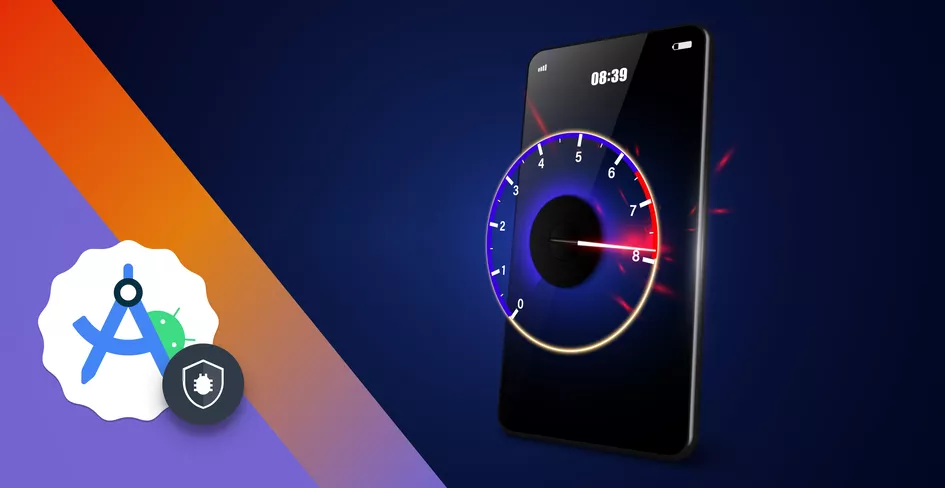
20 Minutes
10 Best App Deployment Platforms
Fix Bugs Faster! Log Collection Made Easy
Best Cloud app deployment platforms (2025 summary)
| Platform | Details |
|---|---|
| Vercel | • Best for: Frontend apps (Next.js, React) with instant CDN • Trial: Free tier with generous limits • Pricing: Paid plans from $20/mo |
| Netlify | • Best for: Jamstack, static sites and form handling • Trial: Free tier with CI/CD • Pricing: From $19/mo for Pro plan |
| Heroku | • Best for: Quick full-stack deployment • Trial: Free tier (limited dynos) • Pricing: From $5/mo per dyno |
| Render | • Best for: Web apps, background workers and databases • Trial: Free services with auto-sleep • Pricing: From $7/mo |
| Railway | • Best for: Backend APIs, databases and serverless • Trial: Free tier for hobby projects • Pricing: From $5/mo |
| Firebase | • Best for: Mobile-first apps and real-time data • Trial: Always-free Spark plan • Pricing: Pay-as-you-go (Blaze tier) |
| AWS Amplify | • Best for: Full-stack apps with AWS services • Trial: 12-month AWS Free Tier • Pricing: Usage-based, starts at free |
What is application deployment?
In the software development lifecycle (SDLC), deployment is the final step, the one where your app is delivered to users. Traditionally, this has meant installing software on the customer’s premises or hosting it in-house. But this approach comes with significant overhead:
- Dedicated personnel for deployment and maintenance.
- Physical servers to purchase, configure and manage.
- Regular hardware and software upgrades.
- Security patches and monitoring.
- Concerns around uptime, cold starts and performance.
With the rise of cloud computing, Software as a Service(SaaS) and Platform as a Service(PaaS), these manual steps are quickly being replaced. Today, most teams deploy apps in the cloud: faster, simpler, and without the headaches of physical infrastructure.
What are application deployment platforms?
Application deployment platforms are cloud-based tools that automate the release, scaling and management of applications across environments. Instead of manually handling infrastructure and scripts, teams can streamline their delivery pipelines with minimal overhead.
These platforms typically offer:
- CI/CD pipeline automation.
- Version control integration (GitHub, GitLab, etc).
- Rollback support and release management.
- Built-in scalability and performance monitoring.
- Support for web, mobile and backend deployments.
These platforms reduce operational complexity, improve delivery speed and support cross-team workflows, all while maintaining reliability at scale.
Great. But why are app deployment platforms essential?
Generally, developers like app deployment platforms because they help deliver code quickly, safely and consistently. They remove the need for custom scripts or manual processes, making deployments smoother and more predictable.
Key advantages include:
- Automating the full deployment pipeline.
- Reducing human error during releases.
- Coordinating multi-environment workflows.
- Speeding up feature delivery and bug fixes.
- Supporting rollback and version control with ease.
As applications grow in complexity, these platforms provide the control and reliability needed to maintain momentum across product, engineering, and operations.
Key features of the best app development platforms
Not all deployment platforms are created equal. The best ones go beyond basic hosting by supporting efficient, scalable and secure workflows, helping teams automate delivery and adapt to changing product needs.
As a general rule, it’s worth looking for platforms that offer:
- Seamless integration with Git-based version control.
- Built-in CI/CD pipelines for continuous delivery.
- Rollback and release management features.
- Multi-environment support (dev, staging, production).
- Infrastructure scalability with minimal configuration.
- Real-time logs and deployment monitoring.
- Team-based permissions and role management.
Choosing a platform with the right feature set ensures smoother deployments and a more resilient development process from day one.
Pros and cons of application deployment platforms
Ah, the classic pro-con table! Every tutorial needs one of these, right? Hopefully this one outlines the good and the bad in a balanced way:
| Pros | Cons |
|---|---|
| Speeds up release cycles with automated workflows | Can become costly at scale or with advanced features |
| Reduces human error during deployment processes | May require time to integrate into existing workflows |
| Simplifies rollbacks, staging, and version control | Vendor lock-in risk with proprietary platforms |
| Automatically scales infrastructure as usage grows | Less control over low-level infrastructure details |
| Improves collaboration between dev, ops and QA teams | Debugging platform-specific issues can require extra effort |
| Offers better monitoring and visibility into deployments | Not all platforms support every tech stack equally |
| Centralizes deployment, logs and environment management | Learning curve for teams new to CI/CD or cloud platforms |
10 Best App Deployment Platforms: Time for an in-depth review
Now you know the nuts and bolts, let’s dive in. It’s time to help you make an informed choice about the best platforms for you.
1. Vercel
Website Link: https://vercel.com/
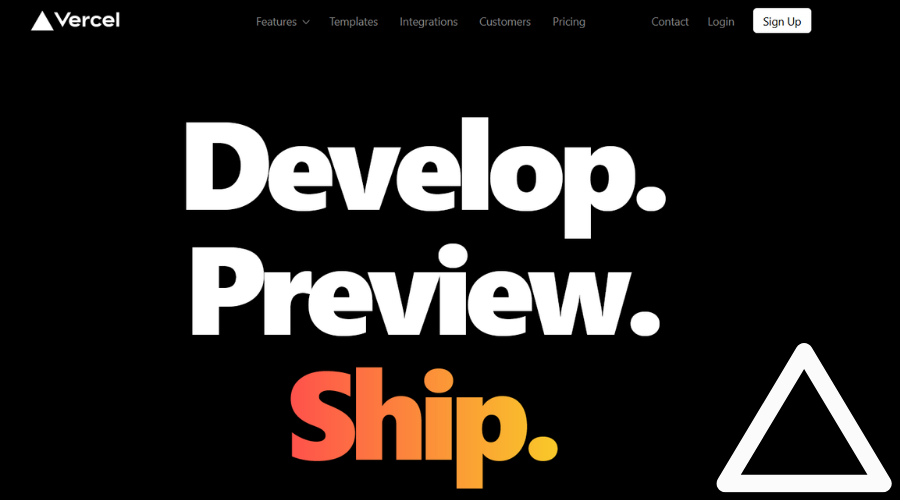
Vercel is a serverless app deployment platform designed to quickly deploy and host web applications. It is equipped with an easy-to-use user interface, which enables you to smoothly trigger a workflow and deploy the app.
Let’s take a detailed look at the many excellent features that make this the product of choice for many developers.
- Build and Edge Deploy: You can deploy your app with a few clicks and host it for free. The CI/CD is enabled automatically, and it allows you to preview your app’s state for every git branch before merging them. Vercel deploys the app on CDN, so it’s fast and secure.
- Flexible Plan: It is free forever for non-commercial and hobby projects. The pricing plans are here.
- Serverless Edge Functions: The serverless functions enable you to move the server-side logic to an edge managed by Vercel’s network. You benefited from added dynamism in your app without sacrificing speed and performance.
- Server-Side Rendering: Server-Side rendering (SSR) could be an excellent choice for your application architecture. Unlike many other deployment platforms, Vercel supports it.
- Domains: Vercel provides you with an app-specific domain. However, you can easily configure it to map to a custom domain.
- Integration with Marketplace: With Vercel, you can integrate your application with many other services and databases, which helps you to extend your app. You can find the list of integrations here.
- Starting Templates: As a quick start, you receive templates out of the box to deploy and then continue the development and deployment. These templates are available for various tech stacks, and you can take a look at the template list here.
- Analytics: The analytics help you ascertain how your app site is doing from customer/user responses and visits. This function is not available under the free plan, however.
2. Netlify
Website Link: https://www.netlify.com/
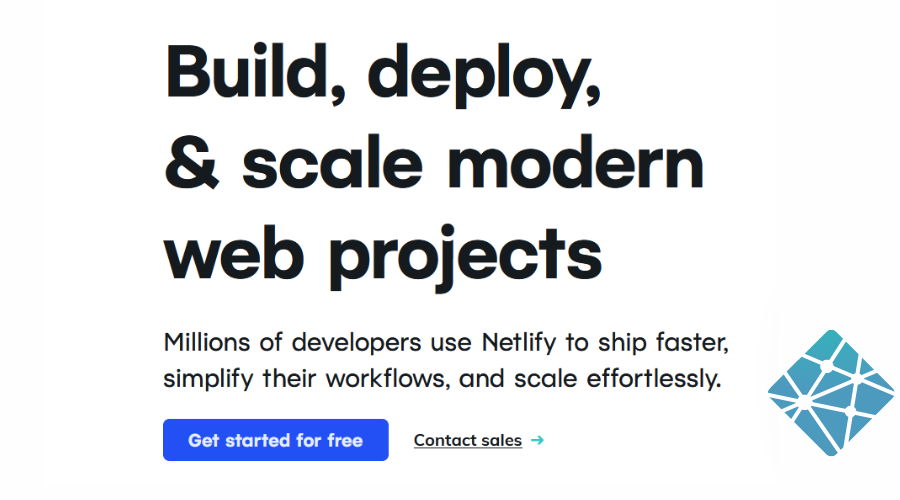
When it comes to speed in shipping the client-side application, Netlify is an excellent choice. Deploying your app with this product is insanely easy, and it is equipped with a whole bunch of outstanding feature offerings.
- Built-in CI/CD: Set up your code with GitHub and other version control services in a few clicks. It supports auto-deploy and offers a preview build for each of the branches.
- Generous Pricing Plan: You can access a very generous pricing plan to host your client-side app. However, you want to use Netlify as a team, you need a different plan. Please see the plan details and pricing here.
- Domain and DNS Management: Netlify provides you with an app-specific URL that you can customize and map as you see fit. DNS management is easy.
- Cloud-Scale Serverless Functions: Netlify enables you to write back-end serverless functions powered by AWS lambda. You can think of them as back-end services that can be written to carry out tasks.
- Identity & Authentication: You can manage logins and registrations using Netlify’s Identity and Authentication service, and enable the function via app hosting (you can learn more about identities here).
- Plug-ins: Netlify plug-ins will supercharge your build. Using these plug-ins, you can perform various checks including accessibility, e-2-e tests, HTML validations and many others. You can always develop a custom plug-in if you do not find the pre-built alternative you are looking for.
- Forms: Netlify forms allow you to manage form submission without any server-side code.
- Analytics: You can enable analytics with Netlify for every deployed project. However, analytics is not part of the free plan.
3. Heroku
Website Link: https://www.heroku.com/
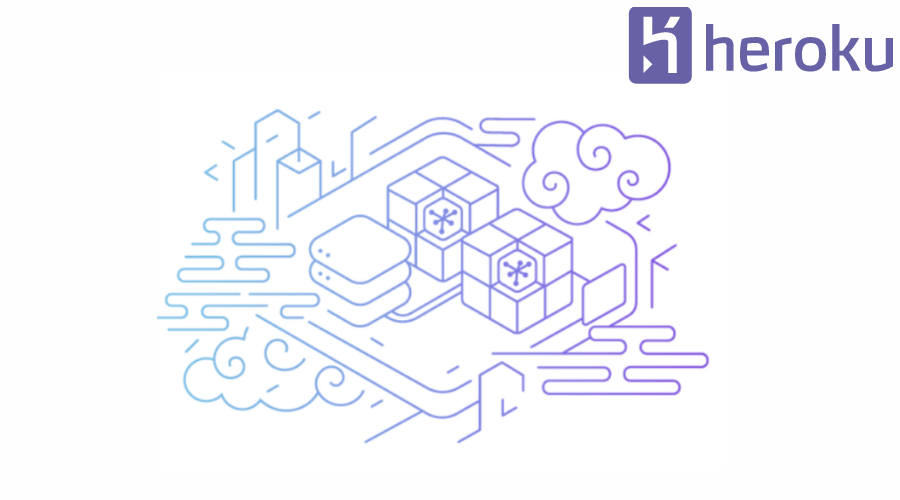
Heroku is a Platform as a Service (PaaS) that offers support to several different programming languages including Node.js, Python, Go and Java. Heroku is a more generic platform than Vercel and Netlify, and here are some of its key features.
- Multiple Programming Language Support: This makes Heroku different from other deployment providers; you can host the application in configurable
dynos, a virtual system. - Entire App Deployment (Fullstack): Thanks to the support of multiple languages, we can deploy a full-stack application on Heroku.
- CI/CD: It is easy to connect to the code repositories in the source control services like ‘GitHub’ and enable auto-deploy.
- Add-Ons: You can extend and run your applications with services like SendGrid (email), MongoDB (database), and many more. It is a huge advantage that we don’t have to manage these services ourselves.
- Plans & Pricing: Heroku is free forever for hobby projects. It includes non-commercial apps, prototypes and side projects. However, you need to get the plan that is best adapted to commercial projects. Check out the details here.
- Code & Data Rollback: Your code and data can roll back to the previous instance if something goes wrong, so you’ve got guaranteed security.
- App Metrics: You can monitor and make decisions, which helps you to know how the apps are performing.
- Buildpacks: You can extend and customize your tech stack using community-driven buildpacks.
4. Firebase
Website Link: https://firebase.google.com/
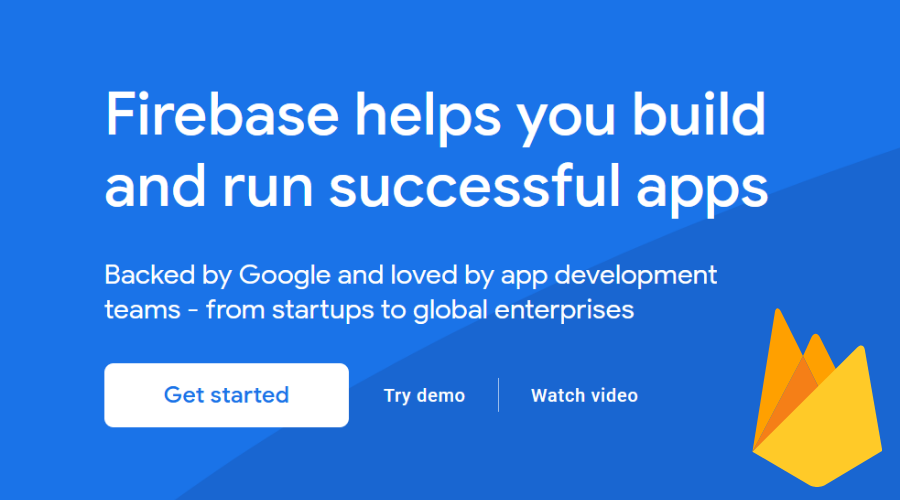
Firebase from Google offers application hosting, deployment, and many helpful back-end services. Here are some key of its key advantages:
- Hosting: You can host microservices, API, and single-page web apps. Setting up an SSL and custom domains all comes with the hosting service.
- Support of Real-Time Database: The NoSQL database helps store and sync data in real-time.
- Free Plan: The spark plan helps you start free, explore and build prototypes. You pay as you consume.
- Authentication Providers: With Firebase hosting, your app can integrate with several auth providers. You can leverage social logins using Google, Twitter and Facebook.
- Analytics with GA: As an offering from Google, it integrates seamlessly with Google Analytics (GA) and is free to use.
- Rich in Utilities: Other utilities like Firebase ML help you enable machine learning features in your app.
5. GitHub Pages
Website Link: https://pages.github.com/
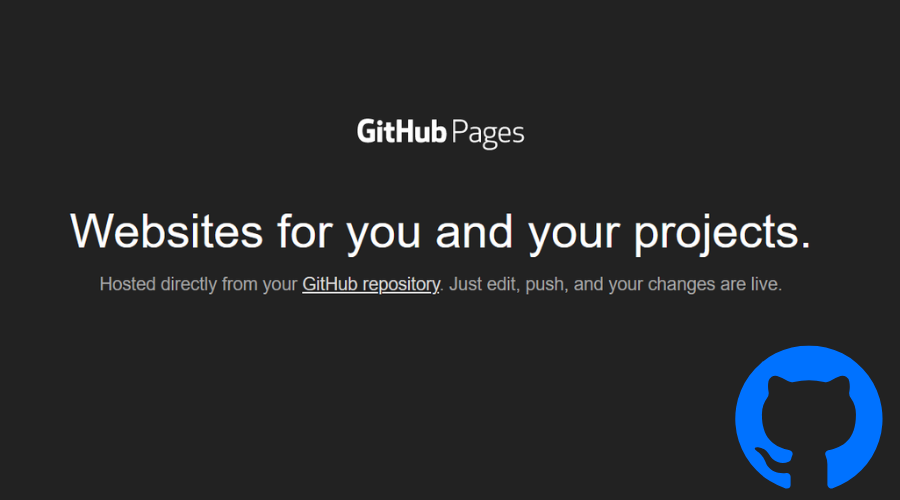
GitHub Pages is an app hosting site where simplicity wins. If you are a user of GitHub, getting started with GitHub Pages is a cakewalk. In most cases, you don’t even have to know any programming languages to get started. The key features are:
- Simplicity: GitHub Pages are great if you’re looking for simplicity in deploying and managing the site. If you are using GitHub already, you don’t have to learn anything additional.
- Perfect for Documentation-Driven Sites: It is perfect for document-driven websites like blogs. You can also host a static site.
- Custom URLs: GitHub allows you to map your GitHub pages site to a custom domain.
- Security: The site will be created for your repository under
GitHub. So it is already secured and running in GitHub’s infrastructure.
6. AWS Amplify
Website: https://aws.amazon.com/amplify/
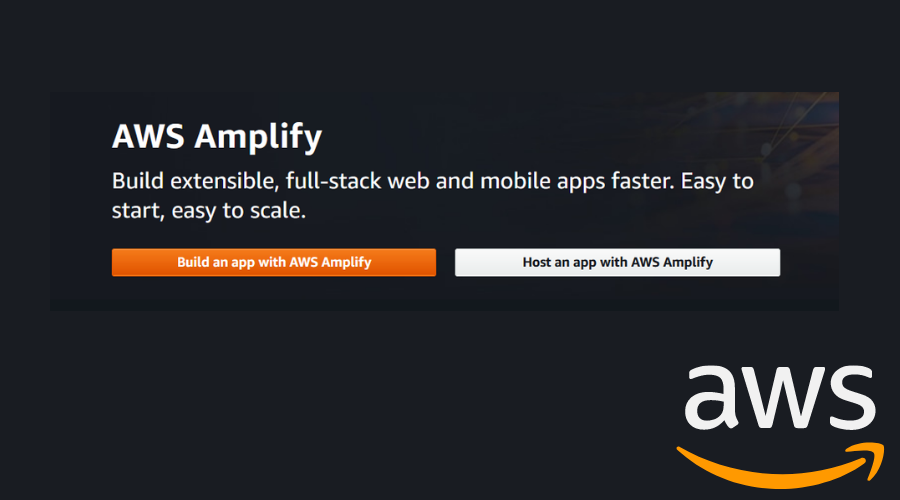
Amplify is an essential AWS service for building, deploying, and hosting apps. Be it static websites, single page apps (SPAs) or server-side rendered apps (SSRs), amplify works really well. The key features are:
- Amplify Toolset: AWS Amplify has a rich toolset to help you with development, building, deploying, and hosting. With
Amplify Studio, you can build a full-stack application visually, andAmplify CLIhelps you to configure the app back-end. You can connect to other AWS services usingAmplify Libraries. Finally,Amplify Hostinghelps to host the app. - Part of AWS Ecosystem: As part of the AWS ecosystem, you can bring in many other AWS services and integrate them to solve compelling use cases.
- Fullstack App Management: Unlike many other platforms we have discussed, you can manage both front-end and back-end applications with Amplify.
- Extensive Documentation: AWS documentations YouTube videos are extremely informative. The community is so vast that you will get all the help you need.
- Pricing: AWS Amplify includes a free tier service for one year, and is chargeable on a usage basis after that. Please check this link to know more.
7. Google App Engine(GAE)
Website Link: https://cloud.google.com/appengine
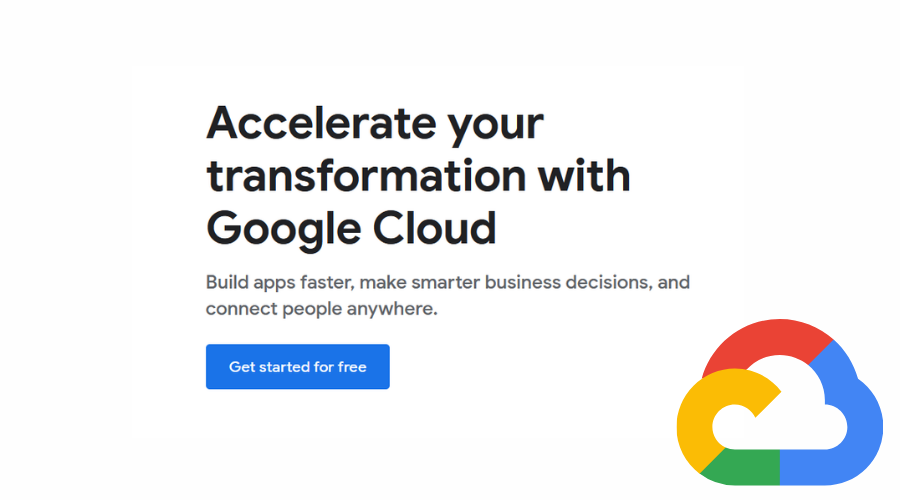
Google App Engine is an offering of Google Cloud Platform (GCP). It is a serverless platform that helps in building highly scalable apps. Its key features include:
- Support for Various Programming Languages: You can deploy applications built with Java, Python, Node.js, Go, and many more.
- Docker Supported: Google App Engine supports containerization. So it-s a big win.
- Completely Managed Serverless Platform: This is a fully-managed platform, so as a developer you don’t have to worry about deployment and post-deployment challenges.
- Application Diagnostics: You can check the health and performance of the app anytime using Cloud Monitoring. Also, you can run app diagnosis using the Cloud Debugger.
- Part of GCP Ecosystem: Google App Engine is part of the Google Cloud Platform(GCP) ecosystem, which helps connect to other GCP services easily. Please check this link for the platform’s pricing information.
8. DigitalOcean
Website: https://www.digitalocean.com/try/app-platform/
The DigitalOcean app platform is a robust programme to build, manage, and scale your apps. It provides you with a fully managed platform so you can place your entire focus on one thing: building applications. Here are some of the fantastic features,
- Vast Programming Languages Support: The app platform supports several programming languages, including Node.js, Python, JavaScript, Go and Ruby. You can also deploy container images and static sites.
- Security: The platform secures your apps by default. DigitalOcean takes care of SSL certificate renewal, mitigating security attacks and securing connections out-of-the-box.
- Fully Managed: Infrastructure, deployment, provisioning and dependencies are all managed by the platform. As a user, it provides a simplistic workflow for deployment. You can deploy a static site, web app, background workers and APIs.
- CI/CD: We can deploy code directly from GitHub repositories with the auto-deploy enabled.
- Alerts & Monitoring: As a user, you can see how your app performs post-deployment.
- Price & Plan: There is a starter free plan with restrictions. You can find out more about it here.
9. Surge
Website Link: https://surge.sh/
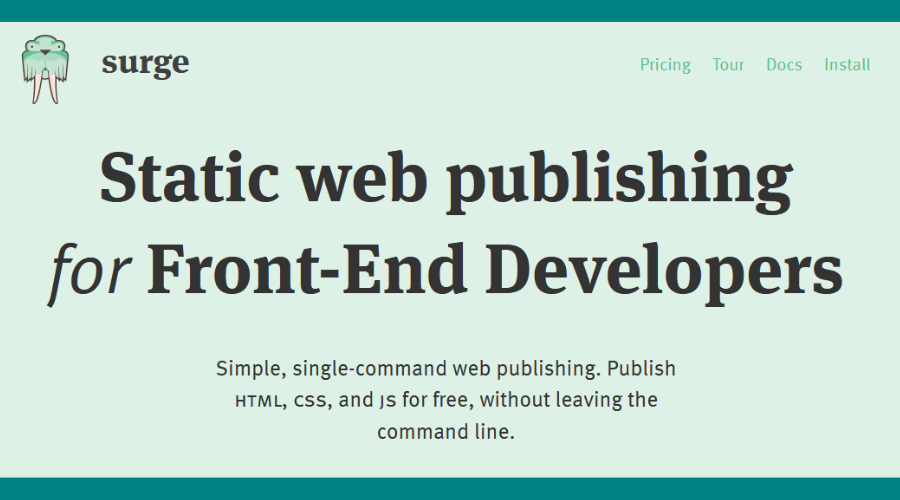
Surge is a popular choice among front-end developers for hosting and deploying static apps. It is a perfect platform if you want something lightweight yet powerful for static-site deployment. The key features are:
- CLI Driven: You will love working with Surge if you are a Command-line interface (CLI) lover. You can literally deploy and host your app with a few keystrokes!
- A highly generous free plan: Surge is free forever. You get unlimited publishing, custom domains, and a basic SSL setup with the free plan. The Surge professionals have more power to add and are priced every month. You can read more here.
- Custom 404 pages: Surge shows a default 404 page when the user hits a URI that doesn’t exist. You can customize it.
- Build tool integrations: Surge has build-tool integrations with Jekyll, Grunt and Gulp.
- Cross-Origin Resource Support: You can perform the CORS setting at your project level, allowing you to easily access the resources from your other projects. Please read more about enabling the CORS here.
10. Render
Website: https://render.com/
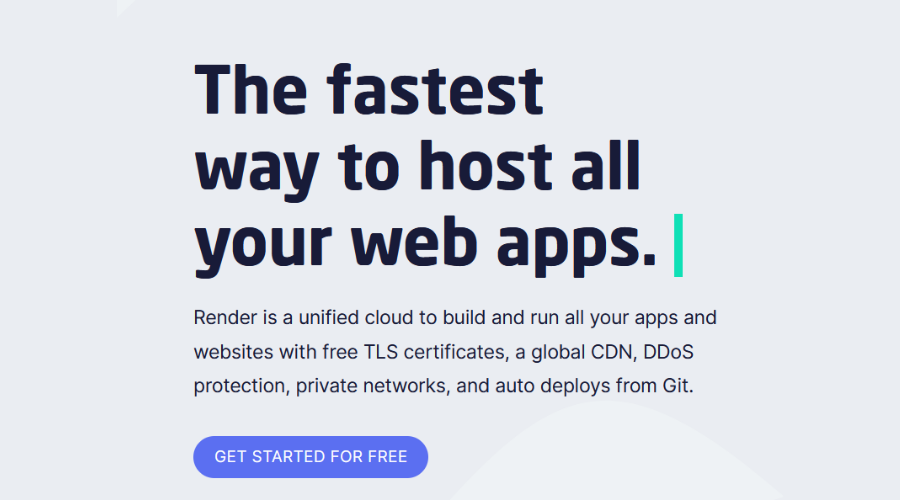
Render is an all-round platform that hosts static sites, APIs, Containers, databases, workers, and even cron jobs! Let’s take a closer look at its features:
- Varieties of services: Render supports static websites, web and private services, background workers, Cron jobs, Docker containers and Postgresql databases.
- A Great plan for all: If you are looking for a static site, services, or database hosting, it’s all free. You pay for additional SSD disk and Cron Jobs support. Please see the detailed pricing plans.
- CI/CD: Render provides the CI/CD and auto-deploy by connecting to your code repository through GitHub.
- Security: The deployed websites come with free TLS certificates and protection from attacks like DDoS.
- Infrastructure as code: Render provides a configuration file called
render.yamlto define the infrastructure configurations for different services and databases. Learn more about Infrastructure as Code here. - Render API Services: Render provides public REST APIs to manage your render services over HTTP. It is an excellent offering as you can personalize the service-related experience using these APIs. Here is the link to learn more about these APIs.
Top-Rated Cloud App Deployment Services
For teams looking for more than just self-serve platforms, cloud app deployment services offer fully managed solutions with built-in scalability, security, and enterprise-level support. These services are ideal when you need infrastructure handled for you, along with advanced tooling and SLAs.
Some of the top-rated services include:
- AWS Elastic Beanstalk – Managed deployment for web apps with autoscaling
- Google App Engine – Serverless PaaS with strong developer tooling
- Azure App Service – Enterprise-ready deployment with deep integration across Azure
- Platform.sh – Full-stack Git-based deployments with team collaboration features
- Heroku Enterprise – White-glove platform with private spaces and compliance features
These options are trusted by teams that need performance, compliance, and ease of scale.
Differences between App Deployment Platforms and Services
App deployment platforms and services both help teams release applications, but they differ in control, support, and scalability. Choosing the right one depends on how much infrastructure you want to manage yourself. Here’s how they compare:
App Deployment Platforms
- Developer-driven, self-service tools
- Offer control over build and deployment pipelines
- Best for teams with in-house DevOps
App Deployment Services
- Fully managed solutions with minimal setup
- Include infrastructure, scaling, and monitoring
- You can mix multiple providers for different requirements
- Ideal for teams needing support or enterprise SLAs
Both are valuable, the difference is in how hands-on you want to be.
Alternative Cloud Development Platforms
While mainstream platforms dominate the conversation, several alternative solutions offer unique advantages that may better fit specific technical needs or infrastructure preferences. These are ideal for teams seeking more flexibility, regional control, or open-source options.
Consider these alternatives:
- Koyeb – Serverless deployment with fast edge delivery
- Fly.io – Deploy apps close to users for low-latency performance
- CapRover – Self-hosted PaaS with Docker and one-click apps
- Northflank – Microservice-ready platform with built-in CI/CD
- Coolify – Open-source alternative to Heroku with UI and Docker support
- Qovery – Simplifies AWS deployments with a developer-friendly interface
- Linode/Akamai App Platform – Easily deploy Kubernetes clusters
These platforms are especially interesting for projects with custom infrastructure, privacy requirements, or specific performance goals.
How to Choose the Right App Deployment Platform for You
Choosing the right platform depends on your app’s architecture, your team’s workflow, and how much control or automation you need. Start by clarifying your priorities, then match them to what each platform offers.
Ask yourself:
- What’s your tech stack (frontend, backend, full-stack, mobile)?
- Do you need serverless, container support, or custom infrastructure?
- Are managed databases a must for your project?
- How important is scalability, compliance, or global delivery?
- Do you prefer a simple UI or full DevOps flexibility?
- Will you need logs, rollbacks, or multi-environment support?
- Are you deploying solo or with a larger team?
Match your answers to platforms that excel in those areas, it’s not about “best overall,” but best fit for your use case as some platforms might not match your needs or won’t support your tech stack.
How Much Do Cloud App Deployment Platforms Cost?
Pricing for cloud app deployment platforms ranges widely depending on team size, usage, and required features. Most offer free tiers, but costs can grow with your app and team.
Typical pricing ranges:
- Solo developers or small projects: Free to $20/month
- Small teams (2–5 devs): $20–$100/month for shared resources and team access
- Mid-sized teams (6–20 devs): $100–$500/month with advanced CI/CD, environments, and support
- Larger teams or enterprise: $500–$2,000+/month for SLAs, compliance, scaling, and integrations
Some platforms charge per user, others per app or usage (build minutes, bandwidth, instances). Always compare what’s included at each tier to avoid surprise costs as your team scales.
Emerging Trends in Cloud App Deployment Platforms (2025)
Key 2025 trends are pushing platforms to become faster, smarter, and more developer-centric:
- AI-assisted deployments: Suggests optimal rollout timing, flags risky changes before release
- Edge-first architecture: Runs apps closer to users, reducing latency and server costs
- Zero-config GitOps: Automates deployments from code commits with minimal setup
- Built-in observability: Logs, metrics, and alerts are now default, reducing the need for external tools
- DX-first design: Cleaner UIs and CLIs improve dev speed and reduce onboarding time
- Transparent pricing: More usage clarity, avoiding surprise costs as projects scale
- Mobile CI/CD support: Easier deployment of iOS and Android apps alongside web projects
- Vibe Coding: Some tools like Lovable or Replit offers a whole solution from idea to deployment
These trends make deployment faster, smarter, and more cost-aware.
Related Software & Tools for Cloud App Deployment
Deployment platforms handle release automation, but other tools help monitor, test, and manage what happens before and after. These are great additions to any deployment stack:
- Bugfender – Remote logging that captures real-world app issues, even offline. Ideal for spotting bugs post-deployment on frontend apps.
- Kubernetes – Orchestrates containerized applications at scale, handling automated deployments, scaling, and recovery across clusters. Often paired with Docker for production environments.
- Docker – Ensures consistent environments from development to production. Works well with most platforms.
- Terraform – Manages infrastructure as code. Ideal for automating cloud resource provisioning.
- Slack + Webhooks – Keeps teams updated on deployment status and errors in real time.
- Amplitude or Segment – Tracks user behavior and release impact without overlapping with logging.
These tools improve visibility, coordination, and stability across your deployment pipeline.
Conclusion: What’s the Best Cloud App Deployment Provider?
There’s no one-size-fits-all, but based on flexibility, performance, and developer experience, a few platforms consistently stand out.
Bugfender’s top 3 picks:
- Vercel – Ideal for frontend teams needing fast global delivery and seamless Git workflows
- Render – Great all-rounder for full-stack apps, background jobs, and databases
- Firebase – Strong option for mobile-first apps needing real-time features and fast hosting
Ultimately, the best choice depends on your stack, team size, and deployment needs. This guide should have given you the clarity to compare options confidently and choose the platform that aligns with your goals — whether you prioritize speed, simplicity, or scalability.
FAQ: App Deployment Platforms
Which are the top 3 cloud app deployment platforms by market share?
As of 2025, the top cloud infrastructure providers are:
- AWS leads with ~30% market share
- followed by Azure (~23%)
- Google Cloud (~11%).
They dominate enterprise infrastructure (64%), but many developers use higher-level platforms (like Vercel, Render, or Firebase) built on top of them for easier deployments and better developer experience.
What is a multi-cloud strategy, and should you consider it?
A multi-cloud approach uses multiple providers (e.g., AWS + GCP) to reduce dependency, improve resilience, or optimize cost. It adds flexibility but also increases operational complexity.
How does vendor lock-in impact cloud development platforms?
Vendor lock-in makes it harder to migrate if pricing, features, or policies change. Look for platforms that support open standards, containers, and exportable configurations.
What is an app deployment platform?
An app deployment platform is a set of tools and services that allow developers to build, test, and deploy applications in various environments, including cloud, on-premises, and hybrid infrastructures.
Why are app deployment platforms important?
They streamline the application deployment process, ensure consistency across different environments, and reduce the time and effort required to get an app up and running. Usually they services are managed, so you don’t need to care about OS and server software updates.
How do app deployment platforms differ from traditional hosting?
Unlike traditional hosting, app deployment platforms often provide integrated tools for continuous integration, continuous delivery, scalability, and monitoring, making the deployment process more automated and efficient.
How do I choose the right app deployment platform for my needs?
Consider factors like the programming languages supported, scalability options, pricing, integration capabilities, and the level of support provided.
Are app deployment platforms secure?
Most reputable platforms prioritize security and offer features like SSL certificates, DDoS protection, and regular security updates. However, it’s essential to review the platform’s security measures and best practices.
Can I migrate my app to a different deployment platform in the future?
Yes, most platforms support migration, but the process can vary in complexity depending on the platform and the app’s architecture.
How do app deployment platforms handle scalability?
Many platforms offer automatic scaling options, allowing apps to handle varying amounts of traffic without manual intervention.
What are the costs associated with using an app deployment platform?
Costs can vary widely based on the platform, features used, and the amount of resources consumed. It’s essential to review pricing models and compare them based on your app’s requirements.
Do I need to have technical expertise to use an app deployment platform?
While having technical knowledge can be beneficial, many platforms are designed to be user-friendly and offer extensive documentation and support to assist users.
What’s the difference between Infrastructure as a Service (IaaS) and Platform as a Service (PaaS)?
IaaS provides users with raw computing resources for manual setup and configuration, while PaaS offers a higher-level environment with tools and services for app development and deployment.
How do app deployment platforms handle updates and patches?
Many platforms provide automatic updates and patches to ensure that the environment remains secure and up-to-date.
How do app deployment platforms handle database management?
Many platforms offer integrated database services, providing tools for database creation, backup, scaling, and management.
Can I use my own domain name with an app deployment platform?
Yes, most platforms allow custom domain integration, enabling businesses to maintain their branding and domain consistency.
Expect The Unexpected!
Debug Faster With Bugfender



